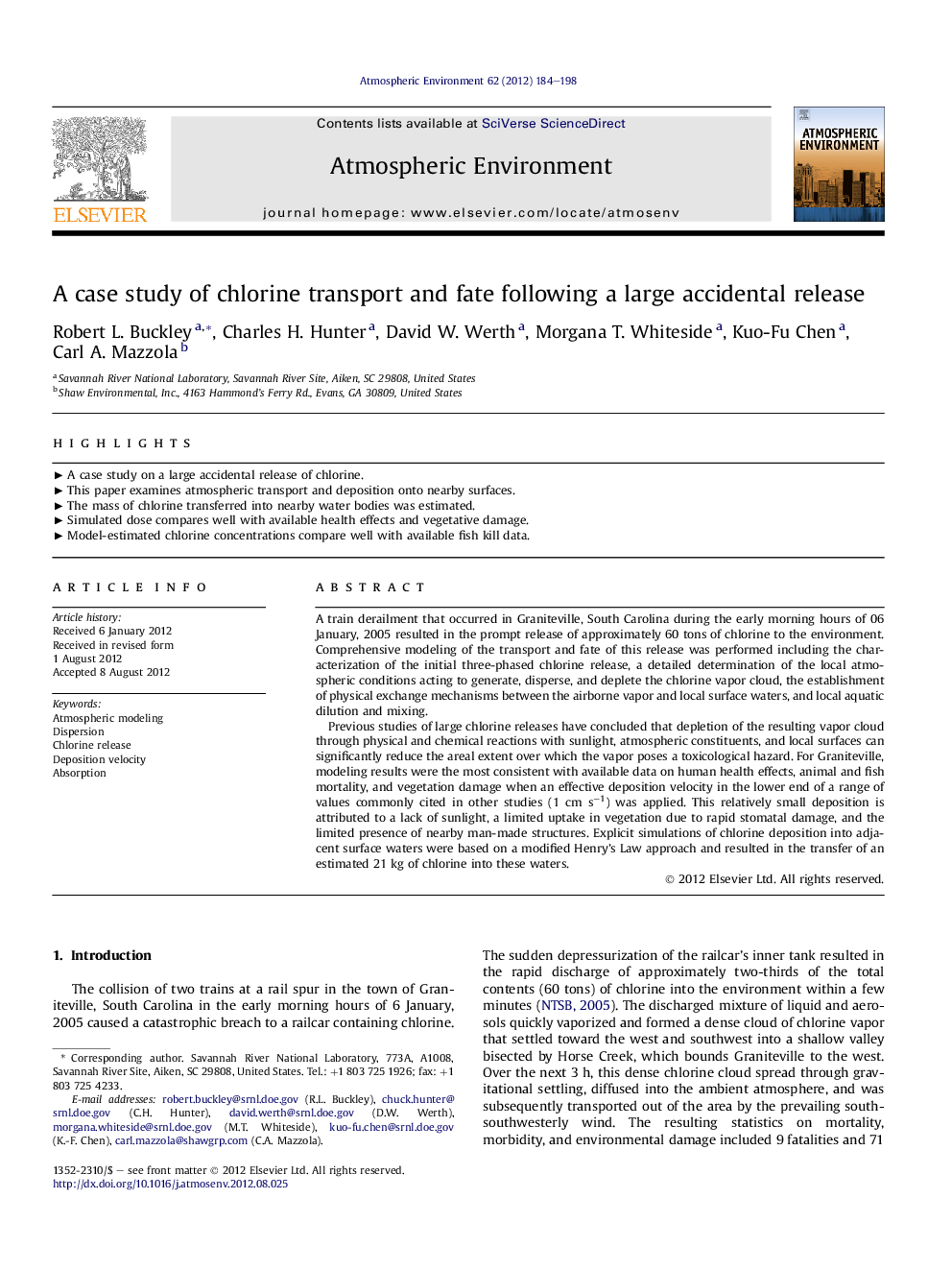| Article ID | Journal | Published Year | Pages | File Type |
|---|---|---|---|---|
| 4438648 | Atmospheric Environment | 2012 | 15 Pages |
A train derailment that occurred in Graniteville, South Carolina during the early morning hours of 06 January, 2005 resulted in the prompt release of approximately 60 tons of chlorine to the environment. Comprehensive modeling of the transport and fate of this release was performed including the characterization of the initial three-phased chlorine release, a detailed determination of the local atmospheric conditions acting to generate, disperse, and deplete the chlorine vapor cloud, the establishment of physical exchange mechanisms between the airborne vapor and local surface waters, and local aquatic dilution and mixing.Previous studies of large chlorine releases have concluded that depletion of the resulting vapor cloud through physical and chemical reactions with sunlight, atmospheric constituents, and local surfaces can significantly reduce the areal extent over which the vapor poses a toxicological hazard. For Graniteville, modeling results were the most consistent with available data on human health effects, animal and fish mortality, and vegetation damage when an effective deposition velocity in the lower end of a range of values commonly cited in other studies (1 cm s−1) was applied. This relatively small deposition is attributed to a lack of sunlight, a limited uptake in vegetation due to rapid stomatal damage, and the limited presence of nearby man-made structures. Explicit simulations of chlorine deposition into adjacent surface waters were based on a modified Henry's Law approach and resulted in the transfer of an estimated 21 kg of chlorine into these waters.
► A case study on a large accidental release of chlorine. ► This paper examines atmospheric transport and deposition onto nearby surfaces. ► The mass of chlorine transferred into nearby water bodies was estimated. ► Simulated dose compares well with available health effects and vegetative damage. ► Model-estimated chlorine concentrations compare well with available fish kill data.
